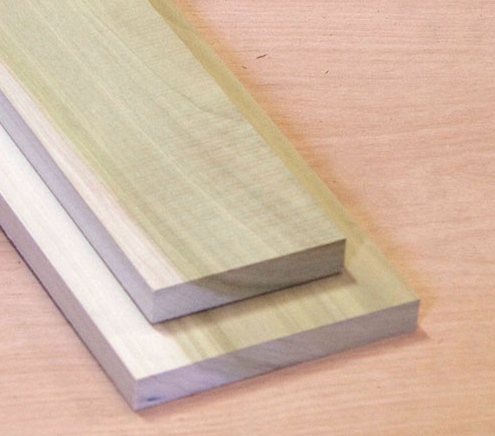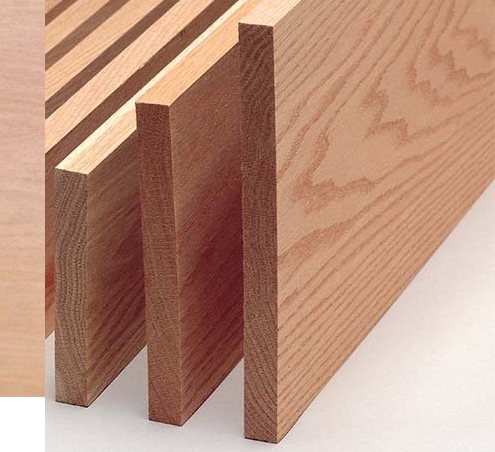July 28, 2018
Poplar Vs. Oak — What's The Difference?
Poplar and oak are the two main hardwoods that are used for domestic purposes.
They are different in several key areas:
- appearance
- density
- workability
- grain
- strength
- cost
- color
These are the main factors that are responsible for differences between the two hardwoods.
Let's go into each of them in a bit of detail:
1. Appearance
Poplar is mostly white with green and yellow strips. Other times, these strips may be black or purple. Poplar is considered to be bland in appearance because it has little to no grain pattern.

2. Density
Poplar has a lower density than oak. Poplar is ranked 540 on a scale that ranks all wood for density while oak is ranked 1,290 on average.

Conclusion
Poplar is generally lighter, easier to work with and cheaper than oak, and is mostly for structural components like drawers, struts, and guides. On the other hand, oak can work best for stained cabinets.
1. Appearance
Poplar is mostly white with green and yellow strips. Other times, these strips may be black or purple. Poplar is considered to be bland in appearance because it has little to no grain pattern.

On the other side, oak varies from pinkish red to light amber. Oak also has complex grain patterns that look like flames.
Both poplar and oak can be stained; however, oak reflects a more vibrant and deeper tone than poplar.
2. Density
Poplar has a lower density than oak. Poplar is ranked 540 on a scale that ranks all wood for density while oak is ranked 1,290 on average.
This difference in density implies that oak is more cumbersome to work with than poplar, whether with a miter saw (recommendations on this page) or some other tool.
The density difference also means that oak is much more brittle than poplar, and thus when curving similar pieces oak will crack or shatter more easily than poplar.
3. Workability
Poplar is more comfortable to cut, nail, sand, and mill than oak.
3. Workability
Poplar is more comfortable to cut, nail, sand, and mill than oak.
The resilience of poplar yields to router bits, saw blades, knives, and chisels having an easier time as compared with the brittle consistency of oak.

Regular saw blades will work well on poplar, but oak will often dull these blades leading to chattering, splintering and burning on a table saw.
4. Carving
Poplar works best for the hobbyist who manipulates woods to make turnings, scrolls, small crafts, and models. The resilient and soft wood yields easily to carving tools, files, rotary tools, knives and any other equipment that may be used for carving.
4. Carving
Poplar works best for the hobbyist who manipulates woods to make turnings, scrolls, small crafts, and models. The resilient and soft wood yields easily to carving tools, files, rotary tools, knives and any other equipment that may be used for carving.
Oak, with its brittle and hard nature, is likely to chip and splinter when carved. You also needs more force when carving oak than you do with poplar.
Conclusion
Poplar is generally lighter, easier to work with and cheaper than oak, and is mostly for structural components like drawers, struts, and guides. On the other hand, oak can work best for stained cabinets.
Poplar is mostly used for components of furniture that cannot be seen.
Posted by: woodworkworld at
03:59 PM
| No Comments
| Add Comment
Post contains 403 words, total size 4 kb.
12kb generated in CPU 0.0079, elapsed 0.0537 seconds.
35 queries taking 0.048 seconds, 47 records returned.
Powered by Minx 1.1.6c-pink.
35 queries taking 0.048 seconds, 47 records returned.
Powered by Minx 1.1.6c-pink.









